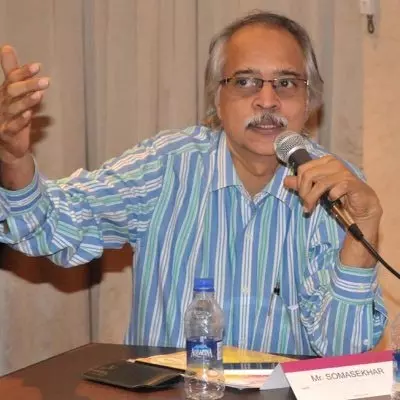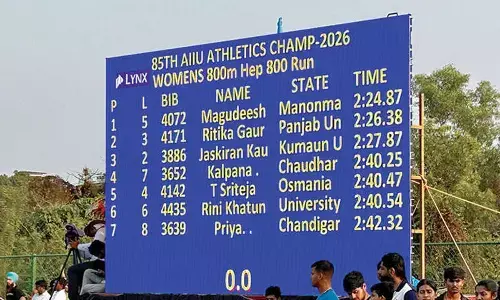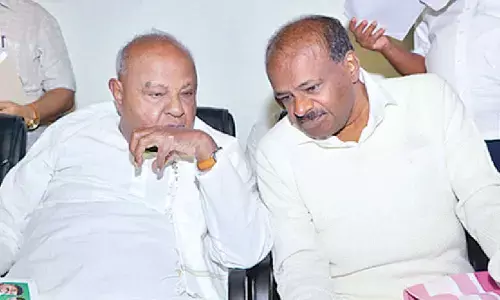Optical industry looks for calibrated support

Optical industry looks for calibrated support
The ongoing pandemic has had a significant impact on both the practice of opthalmology and the eyecare market in India, like most sectors. For the months between April to June, most of the small practitioners were shut, the major eyecare centres did emergency procedures.
The ongoing pandemic has had a significant impact on both the practice of opthalmology and the eyecare market in India, like most sectors. For the months between April to June, most of the small practitioners were shut, the major eyecare centres did emergency procedures.
Even as the economic activity has been opened up in a phased manner by the Union and State Governments, there is very little momentum in eye health practises. Several reasons underscore this trend. For example, people are postponing elective surgeries, Govt's have slowed down schemes and focussed completely on COVID19 and falling income levels are forcing people to drop buying beyond vision devices.
An optimistic estimate will show 30-35 percent opening up of eyecare centres in Metros and State capitals now compared to pre-COVID 19. There have been attempts to push online business by some of the players like Lenskart etc., says Ramachandran P, an industry veteran and Business Consultant, Eyecare Sector.
The near term outlook also is quite challenging say experts spoken to. With the contraction in the economy and revenue shortfalls hitting states, it's anybody's guess as to how the consumer trends will change ad Govt programmes suffer. Investment in new technologies and equipment could also fall. Therefore, the optical industry needs to rethink its strategy of meeting consumer demands.
Indian domestic industry
According to a Deloitte report the size of the Indian eyewear market was USD 7.4 billion in 2018. It was projected to grow at a CAGR of over 9 per cent to reach USD 13.6 billion by 2024 driven by strong demographics and the growing economy.
Given the potential, the domestic optical industry has been gearing up to invest in manufacturing and scale up. The eyewear market is dominated by unorganized sector accounting for nearly 75 percent of the overall market.
At present, most of the players are Small & Medium Enterprises (MSMEs), except for Titan, Lenskart etc. More than half a dozen of the global biggies like Essilor, Bausch & Lomb, Johnson & Johnson, Hoya Corporation, Carl Zeiss etc prominently present. The welcome trend is the growth of the organised sector in recent years.
However, the cost of capital is the impediment that entrepreneurs are facing today. "We must create an industry climate for mass-scale manufacture of all products wherein Indian and FDI investments can also come in. But this has to be supplemented by ancillary industries also being set up along with mass manufacturing", says Ramachandran.
The Chinese dependence
The dependence on China for a range of finished products and raw material is significant as on date. For example, in the manufacture of spectacle frames there are just a handful of MSMEs in making plastic and metal frames. But, more than 75 per cent to 80 per cent of the volumes are imported from China. The spectacle lenses are processed and finished according to the doctor's prescription and the consumer's taste. The casting of lenses from liquid monomer is again made in China, which could be approximately 90 percent of Indian consumption says Ramachandran. Even in sunglasses, up to 90 percent of volumes consumed in the country are imported, with China bagging the lion's share. Out of the total eyewear import, China accounts for a total of 80 percent according to industry sources – thus making it the single largest exporter of eyewear to India.
While there are some MNCs, who are expanding to cater to domestic demands and exports, there is a huge opportunity to attract investments for an alternate production destination to de-risk their world requirements manufactured in China, feel experts. But, it's easier said than done. To get onto the lucrative, but competitive road, efforts have be focussed on creating quality infrastructure, good logistics and efficient export procedures, quality and trained manpower. Make in India is certainly one way.
The industry needs a push through the creation of an Optical corridor and a few manufacturing clusters with subsidised land and power to compete with China. There is also a need to move into high end technology products as India enjoys a competitive edge over China due to better IPR laws and manpower.
The rapid growth in use of smart, digital devices is leading to eye fatigue. Similarly, the early exposure to computers and mobile phones among children is bringing its own challenges. There is a need to have corrective and protective lenses.
Vision Challenges and poor
In the Indian context the huge burden of vision correction in itself is both a challenge and impediment for the growth of the optical industry. Institutes like the LV Prasad Eye, Sankar Nethralaya, Rajendra Prasad Opthalmology Centre and many have been doing immense service in reaching out to the poor and needy to. In recent years, the India Vision Institute (IVI) has joined hands with these and global companies to reach more people quickly.
The focus is on creating and addressing the twin problems of awareness and reducing the incidence of cataract and refractive error among school going children and the old.
According Vinod Daniel, CEO of IVI, over 100 million people need access to a pair of glasses but don't have. In many parts of rural India, people are not aware that they cannot see well because they don't have access to a pair of glasses. The absence of outlets where they can go and test and skilled manpower makes it a challenge for half of India's population living in rural areas to be fully productive in life.
In a study of working men and women in India, wearing reading glasses was found to increase productivity by 34 per cent and workers income by 20 per cent. As much as 80 per cent of what children learn is acquired through visual processing of information, he explains.
States like Telangana recently launched 'Kanti Velugu' programme, to provide spectacles to the poor. Several states has different programmes. Efforts by NGOs with support from some lens makers have also been working in the are. But, the efforts are small compared to the scale and range of the problem.

















